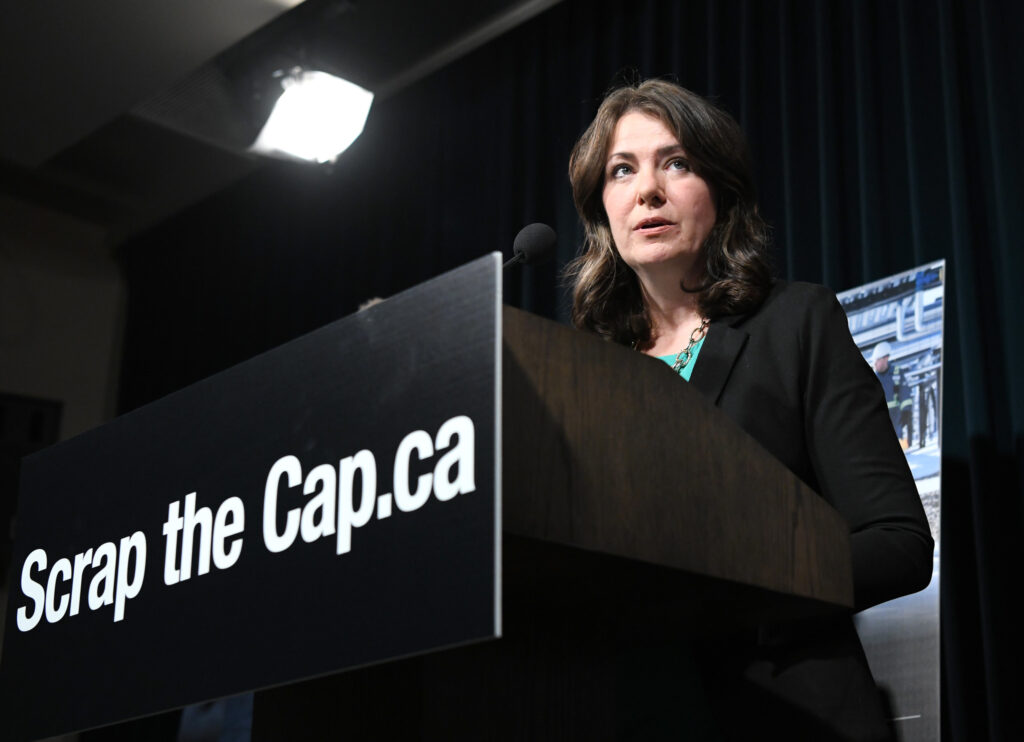Since late 2009, there’s been a slowly-growing wave of attacks from the unconventional oil and gas industry on media outlets that cover the controversies surrounding hydraulic fracturing (fracking) and other shale gas practices. Reporters who write for publications ranging from Rolling Stone to Reuters to the New York Times have had their professional bona fides called into question after unearthing documents and facts that challenge claims that fracked shale gas is cheap, abundant, and clean.
These industry attacks on media occur against the backdrop of a larger campaign to establish unconventional oil and gas at the forefront of the nation’s energy options.
Only a few years ago, it seemed likely that gas would increasingly be a mainstay of power generation, especially in the wake of high profile disasters like the Massey Upper Big Branch coal mine disaster and the BP oil gusher in the Gulf of Mexico. The industry (at the time) received support from surprising allies like the Sierra Club and the Center for American Progress. Fukushima tarnished the nuclear industry, further shifting momentum towards shale gas for utility-scale electricity generation.
But a popular movement fueled by growing concerns about water contamination and public health impacts posed by fracking, coupled with a clearer look by press and by Wall Street analysts at the industry’s claims, has threatened to derail the ascendency of unconventional gas.
Quite often, rather than responding to the issues raised in a responsible fashion, industry PR shops have questioned the motives and qualifications of journalists who investigate the problems with shale gas development, and especially those who delve into the industry’s economic prospects.
The attacks against reporters are noteworthy in part because they are so personal.
“Although our expectations for honesty and fairness were quite low, the writer failed to reach even that low bar,” Michael Kehs, the vice president of strategic affairs and public relations at Chesapeake Energy, wrote in an open letter responding to Rolling Stone’s expose of the company’s financial precariousness.
Ad hominem responses like this shift focus away from the issues raised in the coverage, and attempt to turn the discussion towards motives – or deep character flaws – that the industry claims reporters harbor.
Often, the allegation is that the media is biased, even if the reasons for that bias are unclear (perhaps because it doesn’t exist).
“You really have to wonder why the New York Times is campaigning against cleaner-burning, domestically produced natural gas,” wrote Ken Cohen, ExxonMobil vice president of public and government affairs, in a blog piece after the Times ran a piece airing industry insiders’ doubts about shale gas.
Nowhere was this vision and practice of the industry better on display than at the “Media & Stakeholder Relations: Hydraulic Fracturing Initiative 2011” conference in Houston last year, where industry PR officials gathered to strategize how to “overcome public concern” surrounding their operations. (This is the same conference where DeSmogBlog learned about the industry’s use of military psychological warfare (PSYOPs) tactics in U.S. communities, and that drillers view growing community resistance to fracking as “an insurgency.”)
A representative from the American Petroleum Institute spent an entire hour leading the group through an analysis of New York Times articles, especially those written by investigative reporter Ian Urbina.
Again and again, the Times coverage was referred to as a “war on shale gas.”
“So, as we look at this overall at API, one of the first questions we ask is: ‘how successful is the New York Times’ war on shale gas?’” said Linda Rozett, Vice President of Communications at the American Petroleum Institute. [starting around 9:25 in this recording]
Of course, no explanation as to why the Times would launch a “war” on shale gas was proffered. The accuracy of the facts reported was also not discussed (perhaps because many of the Times’ shale gas articles are accompanied by thousands of pages of leaked documents, sometimes from the industry itself). But the sense of victimization was palpable.
“In every case, the New York Times is the worst, in terms of coverage of our issues,” the API‘s Linda Rozette said.
This defensive industry reaction to media coverage is by no means limited to the Rolling Stone or The Times. The unconventional oil and gas industry has aggressively gone up against reporters and editors of all stripes, at publications large and small.
One of the first people to raise questions about shale gas’s potential was Arthur Berman, a former Amoco geologist who, at the time, was a long-time contributing editor for an industry magazine called World Oil.
But when Berman raised important questions about the ways the shale gas industry calculated their reserves, his column was cancelled by the magazine – amidst pressure from shale gas companies like Petrohawk. Mr. Berman resigned in protest, and within a few days, his editor, Perry Fischer, was fired.
The industry denied that it was responsible – “It is doubtful that his termination was a direct result of comments made by Petrohawk,” the company’s Investor Relations Vice President Joan Dunlap told a Houston Chronicle reporter at the time – but those involved had something different to say.
“Let me be clear: The decision to pull Art’s column was due to pressure from these two companies,” Fischer later wrote.
Despite this, Arthur Berman was undeterred. He has gone on to become a persistent thorn in the industry’s side, and the issues he’s raised have been picked up by countless publications ranging from the staid Financial Times, trade publications like Platts and mass media outlets like CNN.
As Mr. Berman has become more prominent, he has again found himself a target for mudslinging by the industry. This was on display in the wake of a New York Times report last year that cited Mr. Berman’s analysis.
“And also, to say that he, a handful of unnamed critics of the industry, and a goat cheese farmer from Fort Worth, and a third-tier geologist who considers himself a reservoir engineer, that somehow they know more about the shale gas revolution in America than companies that have combined market caps of almost $2 trillion and have spent hundreds of billions of dollars to develop these new resources, I mean, it’s ludicrous.”
That’s how Aubrey McClendon, CEO of Chesapeake Energy, described the New York Times’ coverage on Mad Money on June 28, 2011, apparently referring to reporter Ian Urbina and the speakers in emails he published, shale gas skeptic and federal reserve board advisory member Deborah Rogers, and Art Berman, the so-called “third-tier geologist.”
Jim Cramer, the show’s host, also questioned Berman’s and the Times’ credibility, saying: “If we’re being duped by the nat gas industry, as this article suggests, then how come Exxon Mobil spent 31 billion to buy nat gas giant XTO? Were they fooled, too?”
It’s worth noting that Art Berman’s analysis is looking highly prescient these days. Official government estimates for shale gas have been slashed significantly. And the most basic element of his thesis – that caution is in order because it’s too early to know for sure how much and how long fracked wells will produce – has even been echoed by an unexpected source: former CEO of ExxonMobil Lee Raymond.
“It’s going to be a little while before people are really confident that there is going to be a sufficient amount of gas for 30 years to support the construction of an LNG plant,” Mr. Raymond told Bloomberg News during a February interview. “I’m frankly not sure that we have enough experience with shale gas to make the kind of judgment you’d have to make.”
Questions about Aubrey McClendon’s Chesapeake Energy in particular have come into sharper focus in light of a series of revelations by a team of over a half-dozen Reuters reporters, based on documents that show Chesapeake colluded with its competitors to drive down lease prices in Michigan, McClendon has borrowed heavily from lenders who do business with Chesapeake and ran a shady hedge fund on the side.
This Reuters series has sparked investigations into Chesapeake Energy’s books by the Department of Justice, the Securities and Exchange Commission and the Internal Revenue Service. It has also led to McClendon’s ouster as board chairman (though not as CEO) and driven Wall Street investors to scrutinize the company’s declining value for months.
But even these reports have come under fire and labeled attacks against the industry:
Another week, another “cut” at Chesapeake Energy and its flamboyant CEO Aubrey McClendon. Death by a thousand cuts will work, as long as in the end it’s death, right? And that’s exactly what the mainstream media is clamoring for.
A new hit piece by Reuters attempts to smear McClendon and in the process snags Canadian company Encana. …
ran an un-bylined piece in Marcellus Drilling News, a website that lists the Marcellus-region branch of the shale gas industry’s most aggressive PR shop, Energy in Depth, as among its key sponsors.
Ultimately, industry proponents may find that these sorts of unsubstantiated allegations of animus are subject to the law of diminishing returns. The field is increasingly crowded with reporters and columnists who have had their professional credentials questioned, had their coverage labeled a “hit piece,” or been accused of waging a “war” against shale gas. And the investigative reporting that prompts howls from the shale gas industry increasingly earns respect and accolades from fellow journalists.
How much longer can the shale gas industry attempt to play the victim, when all the evidence compiled by investigative journalists points to significant cause for concern about threats to drinking water and public health, as well as the economic fallout of the shale gas bubble?
Perhaps the shale gas industry should spend less time on attack-dog PR, and more time acting responsibly to address its many risks.
Subscribe to our newsletter
Stay up to date with DeSmog news and alerts






